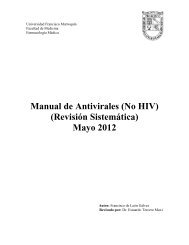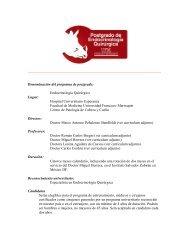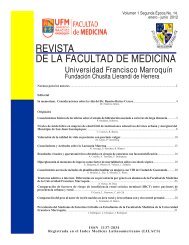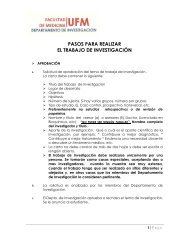Teaching That Sticks (pdf)
Teaching That Sticks (pdf)
Teaching That Sticks (pdf)
- No tags were found...
You also want an ePaper? Increase the reach of your titles
YUMPU automatically turns print PDFs into web optimized ePapers that Google loves.
they’ll be prepared should, one day, somebody knock them<br />
over on the street and trap them under a barbell. “You lift<br />
weights so that you can knock over a defensive lineman, or<br />
carry your groceries or lift your grandchildren without being<br />
sore the next day. You do math exercises so that you can<br />
improve your ability to think logically, so that you can be a<br />
better lawyer, doctor, architect, prison warden or parent.<br />
MATH IS MENTAL WEIGHT TRAINING. It is a means to an<br />
end, (for most people), not an end in itself.”<br />
Let’s unpack this ingenious response. Note that it’s<br />
Simple because of its analogy comparing algebra to weightlifting.<br />
It’s unexpected by virtue of the surprising first<br />
line, “Never. You will never use this.” It’s Concrete because<br />
Sherman provides specific occasions that can be visualized:<br />
knocking over a defensive lineman, being a better prison<br />
warden. And it’s Emotional because it appeals to students’<br />
aspirations: This subject can make you a better doctor,<br />
lawyer, or parent.<br />
And that’s the role of Emotion in making ideas sticky:<br />
To transform the idea from something that’s analytical or<br />
abstract or theoretical and make it hit us in the gut (or the<br />
heart).<br />
More on Emotion from the book Made to Stick<br />
• Why the term “sportsmanship” has become so weak<br />
and watered-down—and how one group of coaches<br />
is turning it around (pages 174-177)<br />
• How the state of Texas managed to decrease littering<br />
by 72% in 5 years by tapping into something that<br />
was important to young, truck-driving guys (pages<br />
195-199)<br />
• Why voters consistently vote against their personal<br />
self-interest, and why this finding should transform<br />
the way we communicate (pages 187-191)<br />
STORY<br />
Have you ever noticed, when you teach, that the moment<br />
you start sharing a personal story with the class, they<br />
instantly snap to attention? Students seem to have Story<br />
Radar. For that matter, so do the rest of us. Some of the<br />
stickiest ideas in the world are stories. Aesop’s fables have<br />
endured for about 2,500 years, and they will easily survive<br />
another 2,500. The world’s religions are built on powerful<br />
stories. Our culture is defined by the stories we tell—in<br />
movies, in books, in the media. Human beings just have a<br />
natural affinity for stories. Stories are the currency of our<br />
thoughts.<br />
None of this is a surprise to you. Teachers understand<br />
the value of stories. But there are two things that might<br />
surprise you: what kind of stories work so well, and why<br />
they work so well.<br />
The first surprise concerns what kinds of stories are<br />
effective in making ideas stick. The answer is this: Virtually<br />
any kind. The stories don’t have to be dramatic, they<br />
don’t have to be captivating, and they don’t have to be<br />
entertaining. The story form does most of the heavy lifting—even<br />
a boring story will be stickier than a set of facts.<br />
And that’s comforting to a lot of us who don’t consider ourselves<br />
great storytellers or dramatists. Woody Allen said,<br />
“Ninety percent of life is just showing up,” and that seems<br />
to be true of storytelling. Ninety percent of the value is just<br />
trying.<br />
If ever there was a subject ill-suited for storytelling,<br />
it’s accounting. Yet two college professors at Georgia State<br />
University rewrote their intro accounting course and put<br />
a story at the center. The story concerned a new business<br />
launched by two imaginary college sophomores, Kris and<br />
Sandy at LeGrande State University.<br />
Kris and Sandy had an idea for a new product called<br />
Safe Night Out (SNO), a device targeted at parents with<br />
teenagers who were old enough to drive. Installed in the<br />
teenager’s car, the device would record the route and speed<br />
of the car. For the first time, parents could confirm that<br />
their car was being driven responsibly.<br />
At this point, you—a student in introductory accounting—become<br />
part of the story. Kris and Sandy are your<br />
friends and they hear you’re taking an accounting class.<br />
They need your help. They ask: Is our business idea feasible?<br />
How many units would we have to sell to pay for<br />
our tuition? You are given guidance on how to track down<br />
the costs of the relevant materials (GPS receivers, storage<br />
hardware) and partnerships (how much it would cost to<br />
sell it on eBay?).<br />
Difficult accounting concepts—such as when to recognize<br />
revenue or how to compute current assets—could<br />
be hung on the structure of the story, the way that ornaments<br />
are hung on a tree. A Christmas tree ornament has<br />
a specific location—it’s on a certain branch, near other<br />
ornaments. And concepts that are taught within a story<br />
structure naturally receive a “location” that makes them<br />
easier to retain—for instance, you might remember cash<br />
flow management originated on the branch of the story in<br />
which Kris and Sandy were growing so fast that they actu-<br />
<strong>Teaching</strong> that <strong>Sticks</strong> 9








